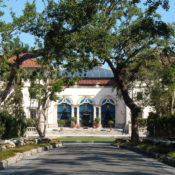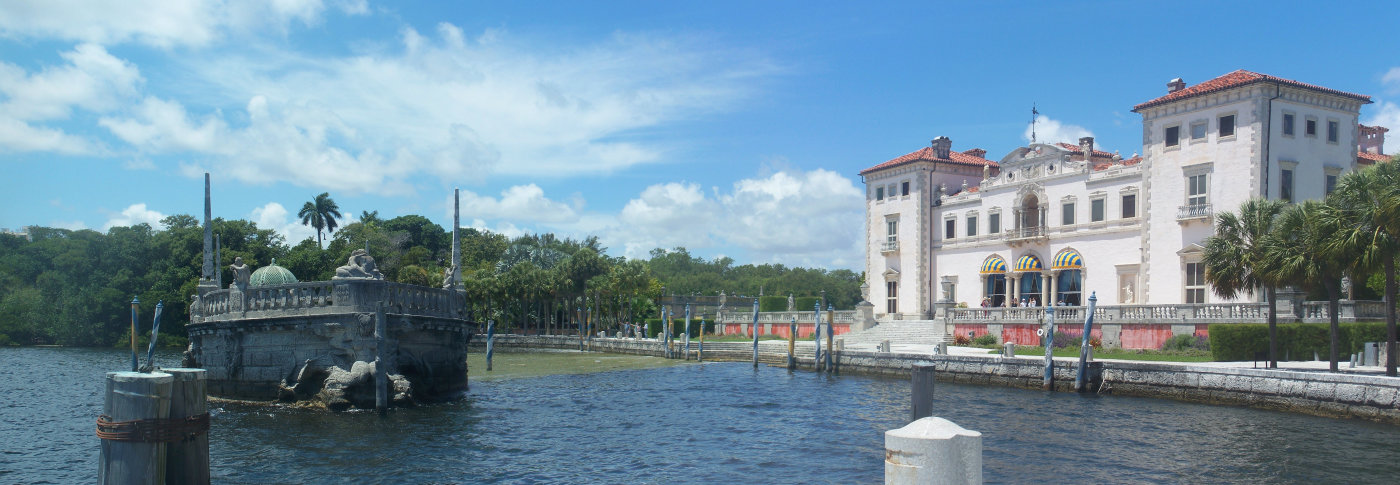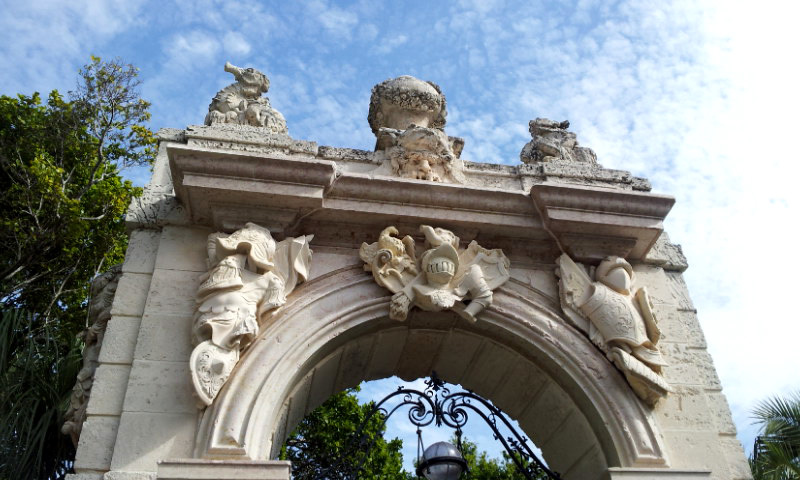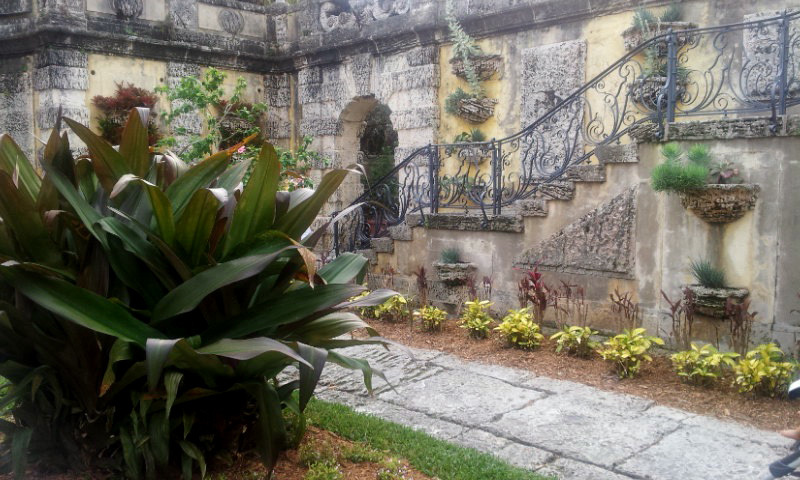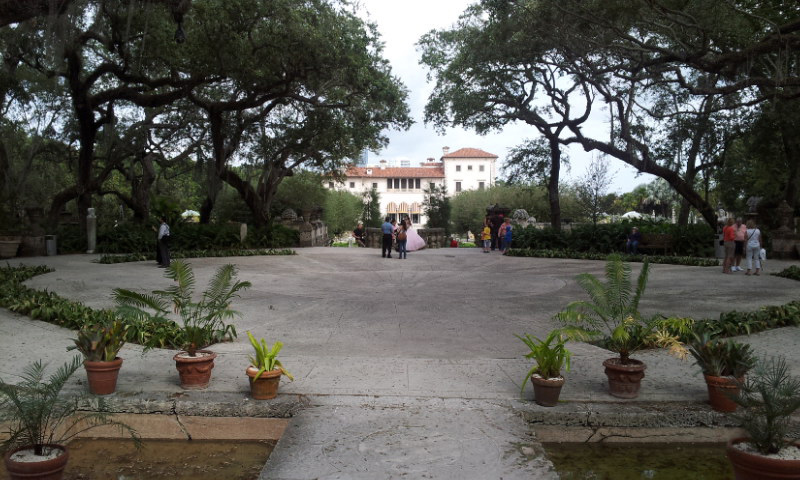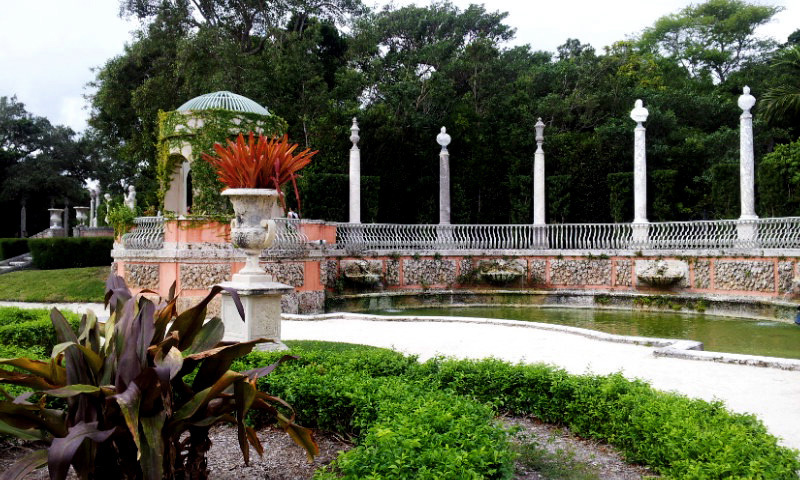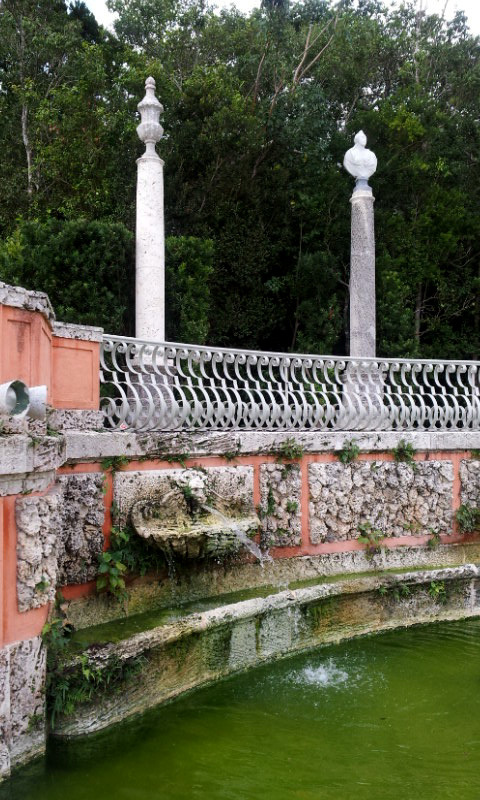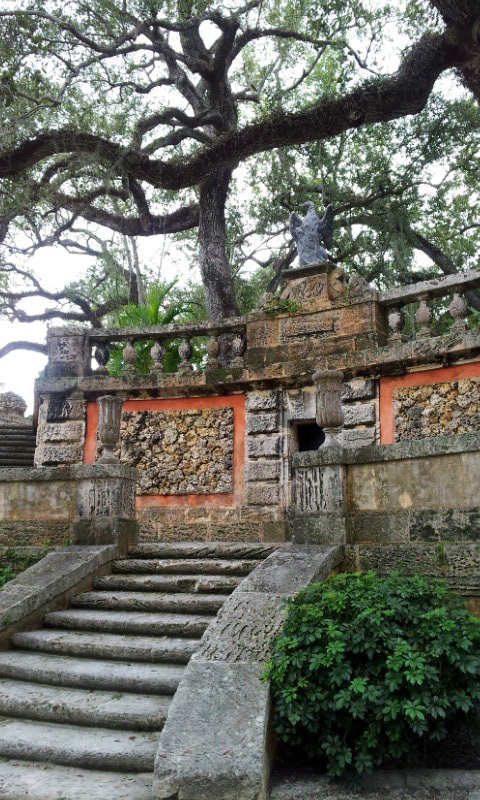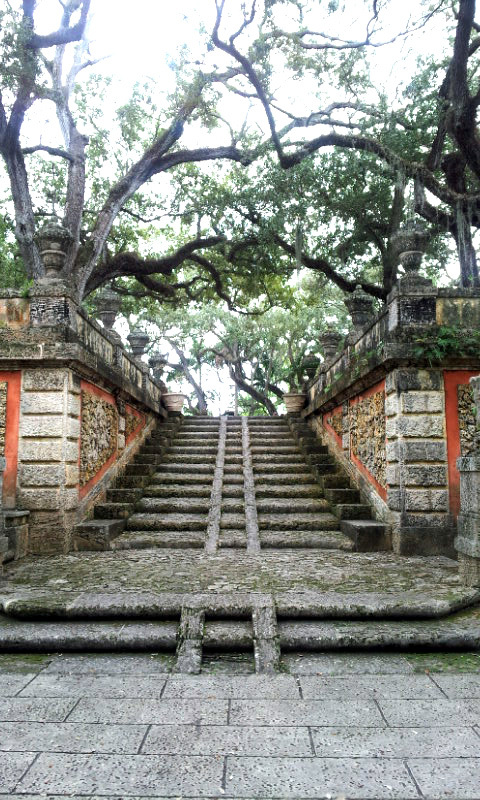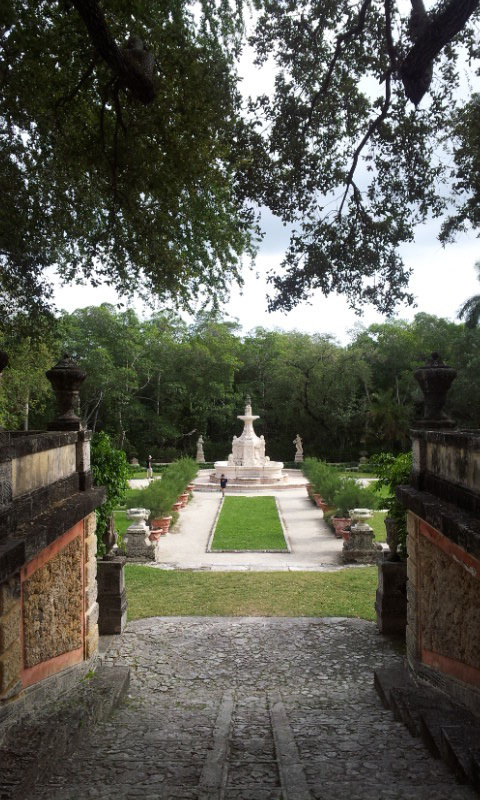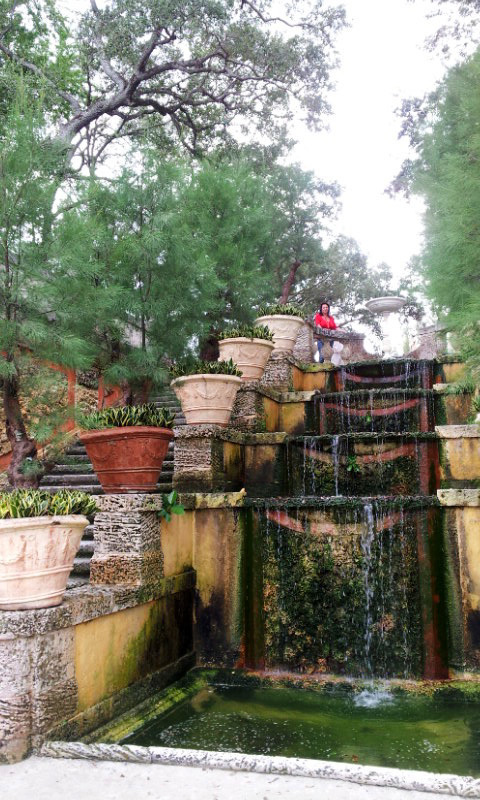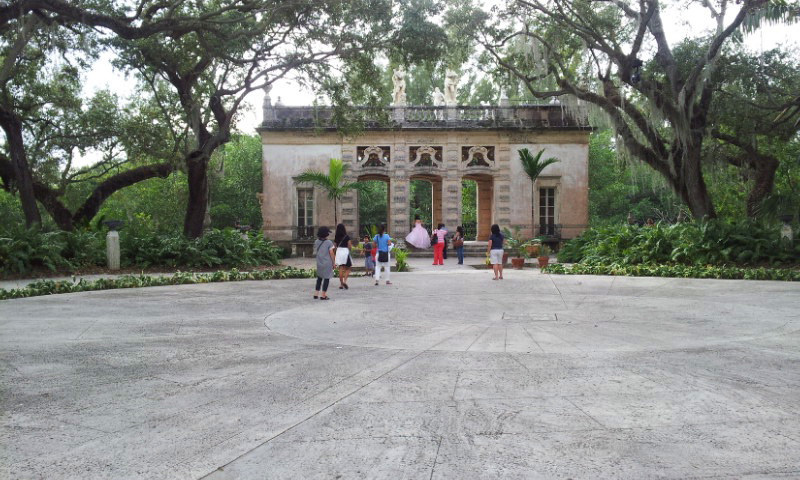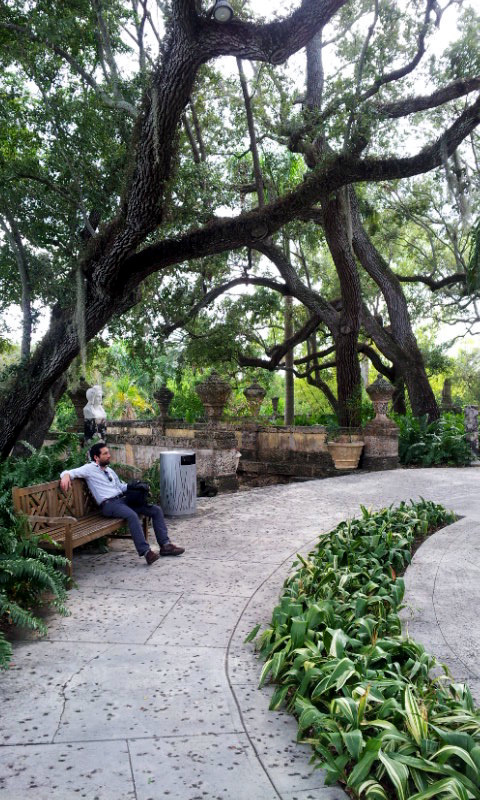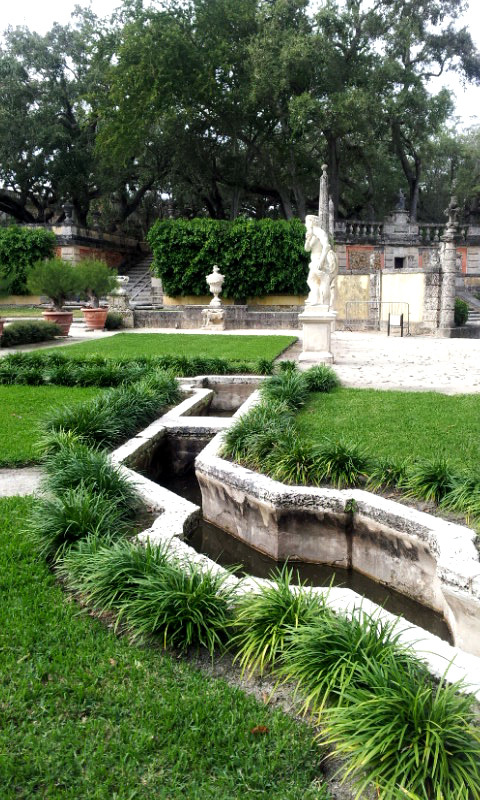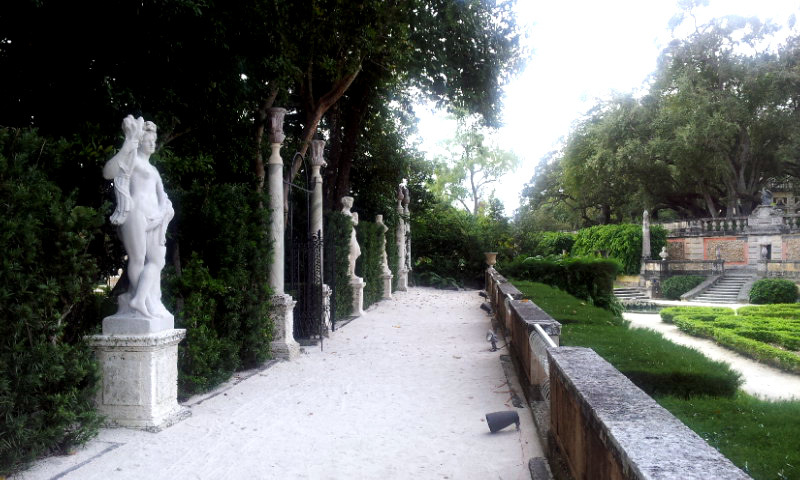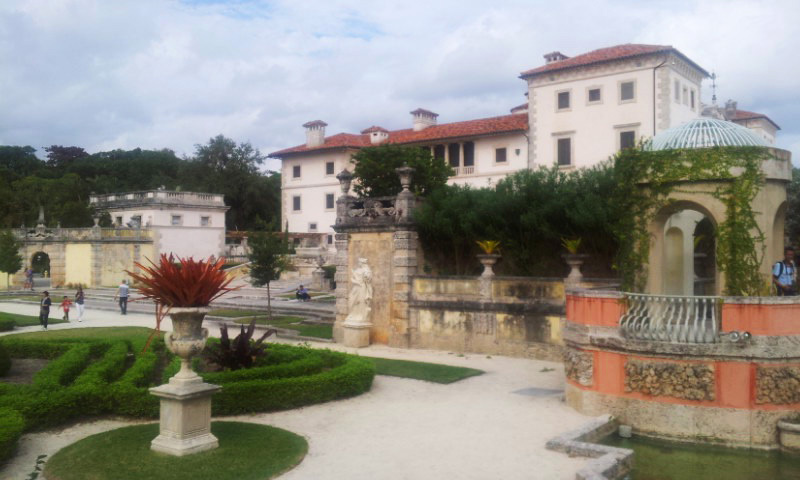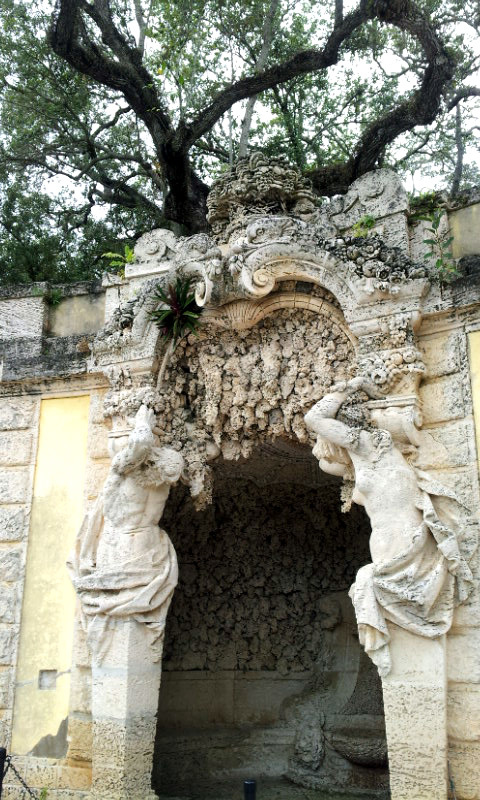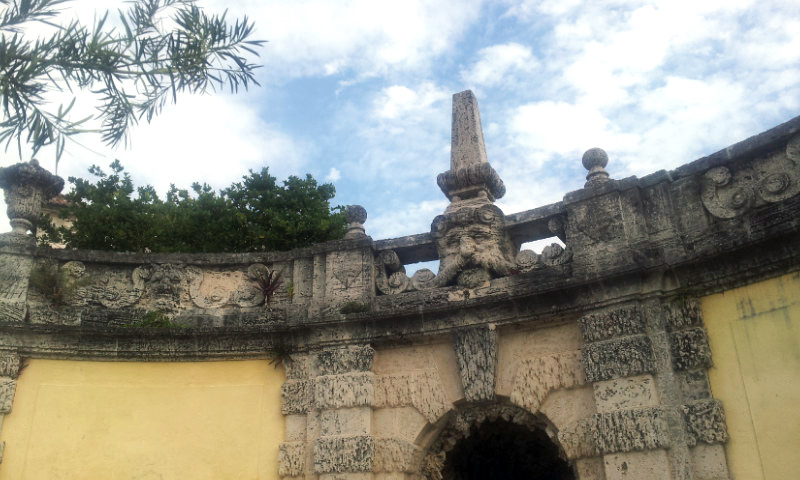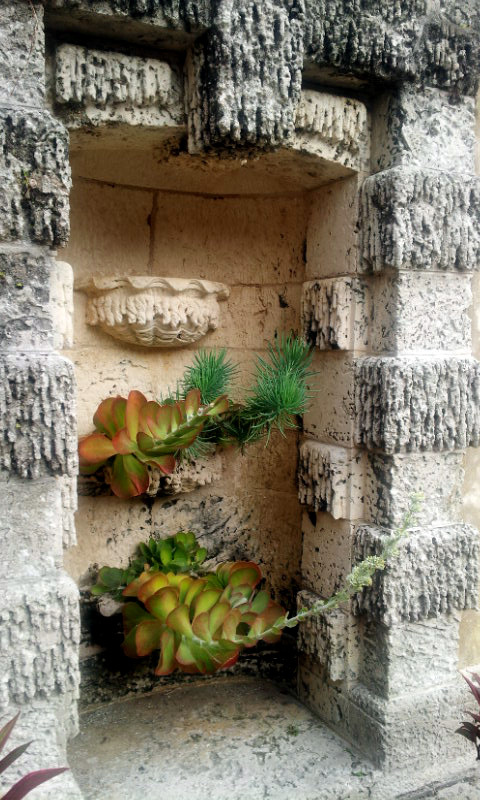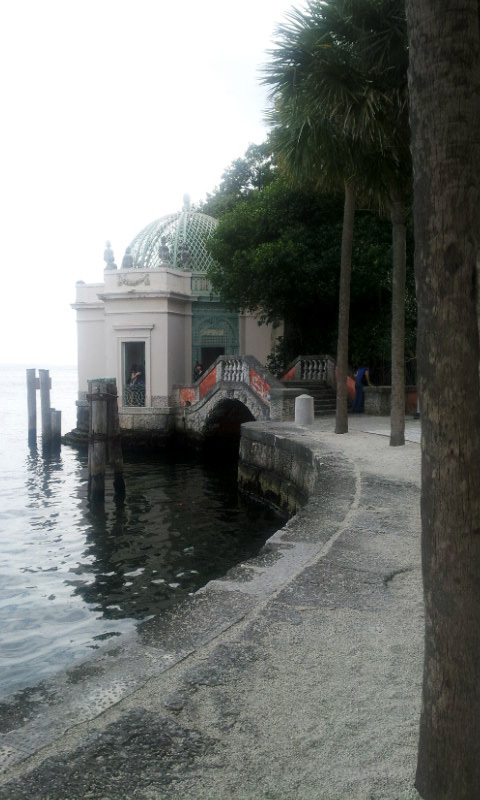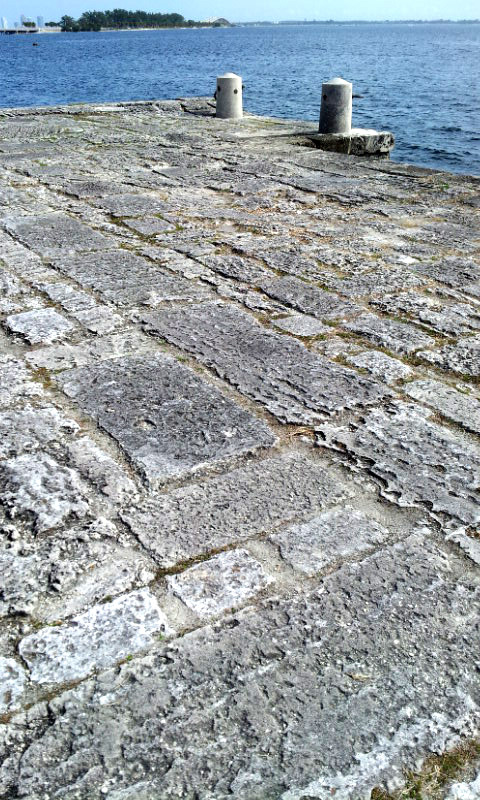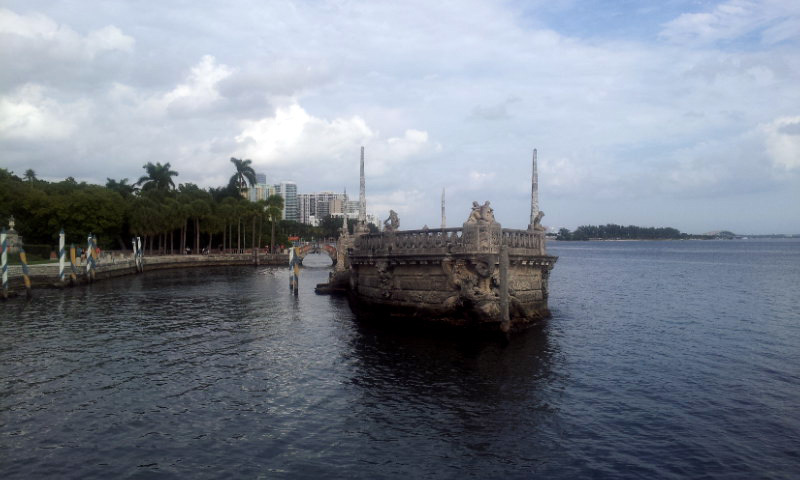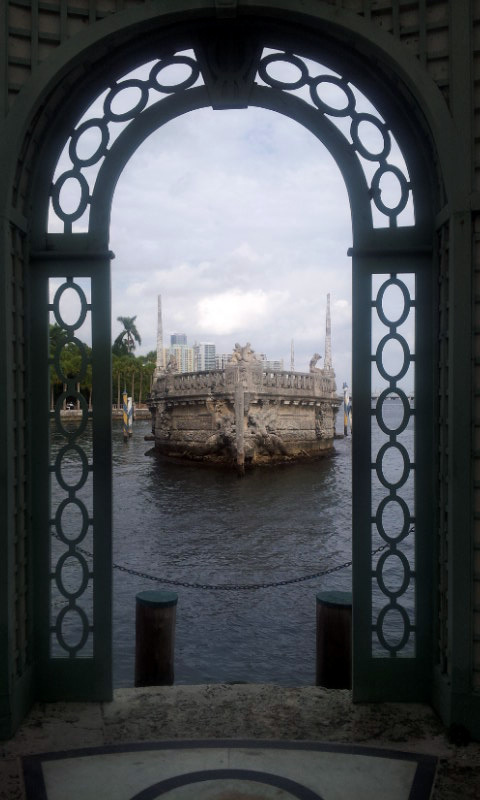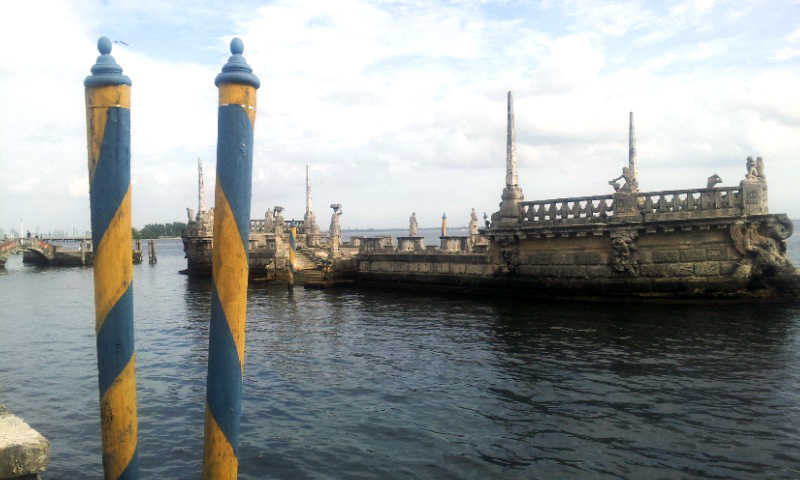Author: Nick McMillan
Miami’s Vizcaya: Formal Italian and French Garden Design Adapted to the Subtropics
When I was a senior in high school, I went on a student trip to see a performance of a Shakespeare play in the gardens of Vizcaya, an estate in Miami, Florida. Admittedly (and a bit embarrassingly), I don’t remember what play it was or much about it, because I was more transfixed by the moonlit atmosphere of the gardens where the play was staged. My tastes in garden and landscape design have run far in another direction since then, but when I went for a return visit this year with family (followed by mind-numbing amounts of delicious Cuban food in Miami’s Little Havana neighborhood), I remembered why I found it to be such a special place.
Vizcaya, which is now run as a museum, was conceived by James Deering, a wealthy industrialist whose father founded what became the giant International Harvester company, the largest agricultural machinery producer in the United States. His interest in sailing, landscaping and plant conservation, coupled with health problems for which his doctors recommended a warm climate with plenty of sun, led him to South Florida, where he began planning his estate in 1912.
Deering bought 180 acres of shoreline mangrove swampland and inland native tropical forest. Deering made preservation of the native forest mandatory on the raised area inland where building his estate would have been logical, instead siting the house and gardens on Biscayne Bay, thereby creating an important link between the estate and the landscape. He left the native forest on the bulk of his estate intact.
The designers of Vizcaya adapted historical European aesthetic traditions to South Florida’s subtropical climate and ecology. While using Italian and French garden layouts and elements, they built the hardscape elements using Cuban limestone and Florida coral, and planted the garden with native vegetation and other plants (including palms and Philodendrons) uniquely suited to the Florida subtropical climate.
In 1916, the house was complete; the gardens were finally finished in 1921. The gardens, inspired by 17th and 18th century gardens in Italy and France, were designed by landscape architect Diego Suarez, with collaboration by Deering and estate Artistic Director Paul Chalfin. Suarez created the gardens as a series of rooms, with the central space dominated by parterres; “rooms” included the Maze Garden, Secret Garden, the Fountain Garden and the Theater Garden, where I must have seen that Shakespeare play 26 years ago.
Suarez realized that his original design, which incorporated a series of terraces between the house and a large lagoon, would subject visitors to reflections of the harsh Florida sun off the water. He also realized that the garden would “melt” into the surrounding mangrove swamp and native forest. He solved that potential problem by creating what is called the “Mound” as the garden’s focal point to shield the house and establish elevation to enhance perspective, building a small formal garden structure called the Casino at the top. Perspective was exaggerated by the use of low hedges that fan out from the garden’s South Terrace.
Suarez left the project before it was completed, but is now credited (along with Chalfin) with creating what is known as one of the most significant American formal gardens. Even though the outer gardens he designed (which referenced North Africa, Asia and the Florida Everglades) no longer exist, there’s still much, much more to appreciate about Vizcaya today.
In these photos of the garden and estate below, you’ll see some of the solutions that the architects found to solve the enormous challenges of the site, including leaving a forested area intact between the gardens and Biscayne Bay to create a buffer from storms and hurricanes. In addition, the offshore stone barge not only served as a romantic stop for party goers (who were rowed out by gondoliers, no less), but also served as a breakwater to protect the grounds from tides and storm surges. You’ll also see the previously mentioned use of local materials such as Florida coral, Cuban limestone and native plants throughout.
Art in the Landscape: New Zealand’s Gibbs Farm
One of the world’s leading sculpture parks lies just over 30 miles (50 km) north of Auckland, New Zealand; the passion of art collector Alan Gibbs, Gibbs Farm combines a spectacular setting on New Zealand’s Kaipara Harbour with monumental site-specific works that challenge both the artists who created them and the viewers who experience them.
Over two dozen artists to date, including Anish Kapoor, Maya Lin, Richard Serra, Andy Goldsworthy, Daniel Buren and Neil Dawson, were commissioned by Gibbs over the past 21 years to design, engineer and place their works on site, often working on a scale they’d never before attempted.
According to an essay posted on Gibbs Farm’s website, “a striking characteristic of the whole collection is the tangibility of the way the site itself – the flow of the land, the dominance of the wide flat harbour and the varied assertiveness of the elements – has imposed itself on the artists who have made work for the farm, and subsequently shapes every visitor’s experience of each artwork.” The lands slope down in waves towards Kaipara Harbour (the largest harbor in the Southern Hemisphere), which is shallow to the point that several miles of mudflats are exposed with the ebb of the tides.
These immense shifting landscapes of land, water and light sometimes hide the true scale of the artworks, especially when viewing the sculptures from a distance. But according to the website, by “walking the landscape and coming into close quarters with each artwork, one after the other, their own scale and particular character unfolds, until one at a time, each artwork fills your viewing horizon and imagination.”
One piece that has garnered a good deal of attention by the press is Neil Dawson’s “Horizons”, commissioned in 1994 as one of the earliest pieces at Gibbs Farm. At 118 feet long and four stories high, the metal and steel sculpture has been compared by Architect Magazine to a “Roy Lichtenstein drawing deposited on a hill”, evoking (according to Gibbs Farm’s website) a “giant piece of corrugated iron that might have blown in from a collapsed water tank on some distant farm, only to rest precariously until the next gale lifts it into the air again.” Its ethereal two-dimensional appearance belies its enormous scale and mass, making it a true contradiction that captures the imagination and challenges viewer perception.
For those of you lucky enough to find yourselves in northern New Zealand, Gibbs Farm is open to the public by appointment only; click here for available dates, times and terms.
More reading:
“Seeing the Landscape” by Rob Garrett reveals the give and take between Adam Gibbs and the artists whose works he commissioned, reveals the characteristics of the landscape and details many of the works in the park.
NPR: “Giant Crumpled Paper Drops From The Sky, Lands On Hill In New Zealand”
Find more photos like this on Land8.com
Images courtesy of Gibbs Farm


